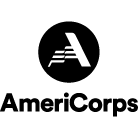How City Year centers equity and community in research

Over the past several years, City Year’s Education Research and Strategy (ERS) Team has grown and diversified its work.
Inspired by peer organizations and a desire to advance City Year’s commitment to diversity, equity and inclusion, the ERS team has adopted an equity focus that recognizes the importance of context, power-sharing and community impact in research processes and studies.
This includes new approaches, such as prioritizing local voices in projects; seeking to better understand, anticipate and plan for trends in the education and human development landscape in which City Year operates; and managing and sharing our research partnerships and findings in more accessible and inclusive ways.
“We believe the research and evaluation we do should not only make contributions to organizational learning and improvement, but also inform how the human development sector thinks about evidence and impact.”
— City Year Education Research and Strategy Vision
City Year’s ERS Team believes that an equity-based approach is a key component of a vibrant research-practice-policy system. This approach requires continuous learning, mutual understanding and a healthy dose of humility.
The Education Research and Strategy Team leverages five key capabilities to contribute to organizational learning and improvement and systems change:
- Third party research project management helps us understand and articulate our impact in schools.
- Community-based action research (C-BAR) empowers key stakeholders to shape the services City Year provides.
- Trend forecasting enables the organization to understand how trends in the education and human development sectors affect our work and impact now and in the future.
- Tools we create help support internal and external stakeholders in making meaning of learnings as a key part of our equity-based approach to research.
- Strategic partnerships with peer organizations and research groups improve our own practice.
Let’s dive deeper into three of the new or recalibrated capabilities of the ERS Team that are reshaping how we do this work: community-based action research, trend forecasting and research management and dissemination.
What is community-based action research?
Community-based action research, also called CBAR, centers the voices, perspectives and assets of the groups, schools and communities that are the focus of a particular area of learning.
CBAR’s purpose is to promote more equitable decision-making and actionable change at the national strategy and local management levels by providing recommendations and insights based on the voice and experience of those doing the work and engaged with City Year’s services.
In the case of City Year, our communities include groups like our AmeriCorps members who serve in schools as student success coaches, teachers and other adults in schools and eventually will include students and their families. We collect and analyze what we learn from different communities into insights that synthesize the needs of multiple communities together with relevant third-party research.
“The highest validity findings always stem from the experience of those engaged in the work itself,” said Tiger Rahman, City Year’s senior director of CBAR.
“When we find the point of agreement between sources of knowledge, beginning with what we’re learning from those most effected, we are positioned to make equitable decisions with a higher degree of confidence about their relevance and utility.”
This process not only helps to advance educational equity but also improves the learning culture of our organization and partnerships.
What is trend forecasting in research?
Trend forecasting enables City Year to:
- Examine the social, technological, economic, environmental and/or political trends in the landscape in which we’re operating that may impact our work.
- Extrapolate what may happen in the future based on current trends.
- Determine how we as an organization should strategically prepare for the future.
This capability will serve as a sensing function for the organization, allowing us to be proactive instead of reactive. By helping us prepare for the future, forecasting will ultimately inform organizational strategy to ensure City Year’s relevance, longevity and equitable impact.
“Trend forecasting empowers the organization by providing the insights and tools we need to not only handle changes in the education and human development sectors that may affect us in the future, but also create systems change by influencing the mindsets and practices of the sector,” said Jade Eckels, City Year’s Director of Education Research & Strategy.
“Trend forecasting not only helps the organization stay competitive in an ever-changing landscape, but it also helps us share what we are learning in new ways and deepen our impact.”
How is City Year collaborating with external researchers?
While City Year has collaborated with external researchers for many years, our equity-focus has shifted the way we work together, define goals and outcomes and share findings.
ERS’s third-party research project management and dissemination function helps the organization understand its impact and future areas of exploration and identify new ways to share what we are learning from our work in schools.
Recent research projects include a new report by the Everyone Graduates Center at Johns Hopkins University and accompanying City Year white paper that highlight the importance of trust in schools and how student success coaches can help to build networks of trusting relationships that help everyone in the schoolhouse to thrive.
By applying an equity-based lens to our research projects and collaborating even more closely with those being researched, City Year is better positioned to contribute to the national conversations about holistic student supports, welcoming and equitable learning environments and the conditions necessary for student and teacher success.
How does an equity focus change the way City Year conducts research?
Our equity-based approach to research guides the research work we do across our research capabilities.
As described in an essay on the release of our Research and Learning Agenda in 2022:
“Many organizations, including City Year, are grappling with the problematic history of researchers using the authority of research to uphold marginalization based on social and racial identities as opposed to being tools to create the conditions for liberation and learning. . . .
“Efforts to understand effective strategies for partnering with students, schools and communities during the pandemic and beyond could transform how we think about education in the near- and long-term future. . . .”
In the past, a small group of senior leaders made major decisions about City Year’s research. Today, however, a diverse governance group from multiple levels of the organization, including AmeriCorps members, site staff and headquarters staff, guides this work.
“Today, we approach projects differently. Researchers no longer determine the methodology alone. The community members most affected by the research inform the questions and design.”
Ultimately, City Year’s goal is to affect broader systems change in education—not only in the schools served directly by City Year AmeriCorps members.
Learn more about City Year’s holistic approach to student and school success.
Related stories
Every year, thousands of young people decide to join AmeriCorps programs for a year (or more!) of service, helping to...
Read more about Everything you need to know about returning for another year as a City Year AmeriCorps memberCity Year is committed to providing our AmeriCorps members with resources, opportunities and support that help them to achieve their...
Read more about Empowering Futures: City Year Baton Rouge’s Partnership with Bottom LineFatimah Abdulmateen takes service seriously. Fatimah served two years with City Year as an AmeriCorps member, making her an alum...
Read more about A City Year alum with a passion for service—both here and abroadThough this part of the City Year experience may be particularly challenging, it’s also normal! And we want you to...
Read more about The “mid-fall slump” in schools is real--here's what to expect















